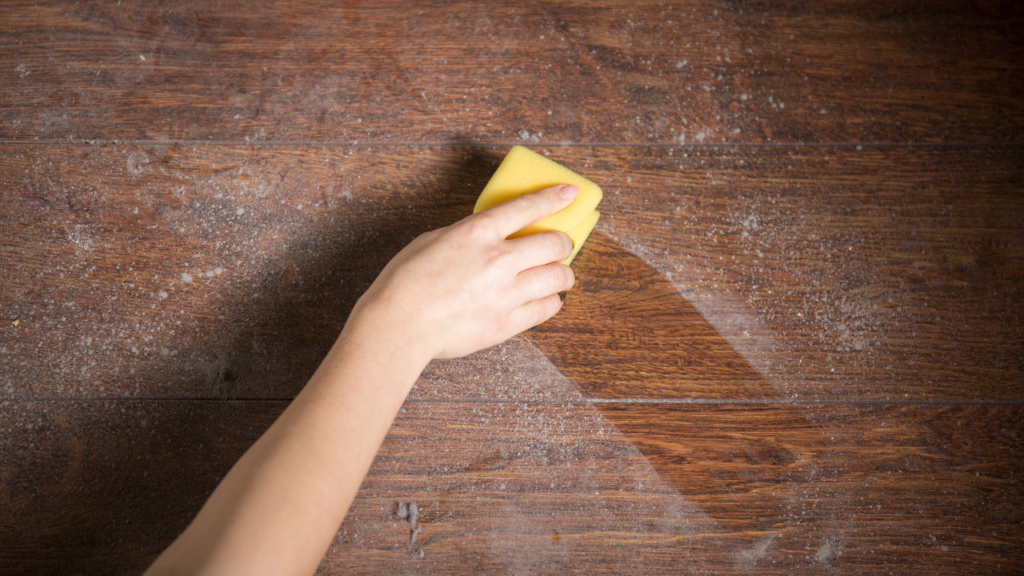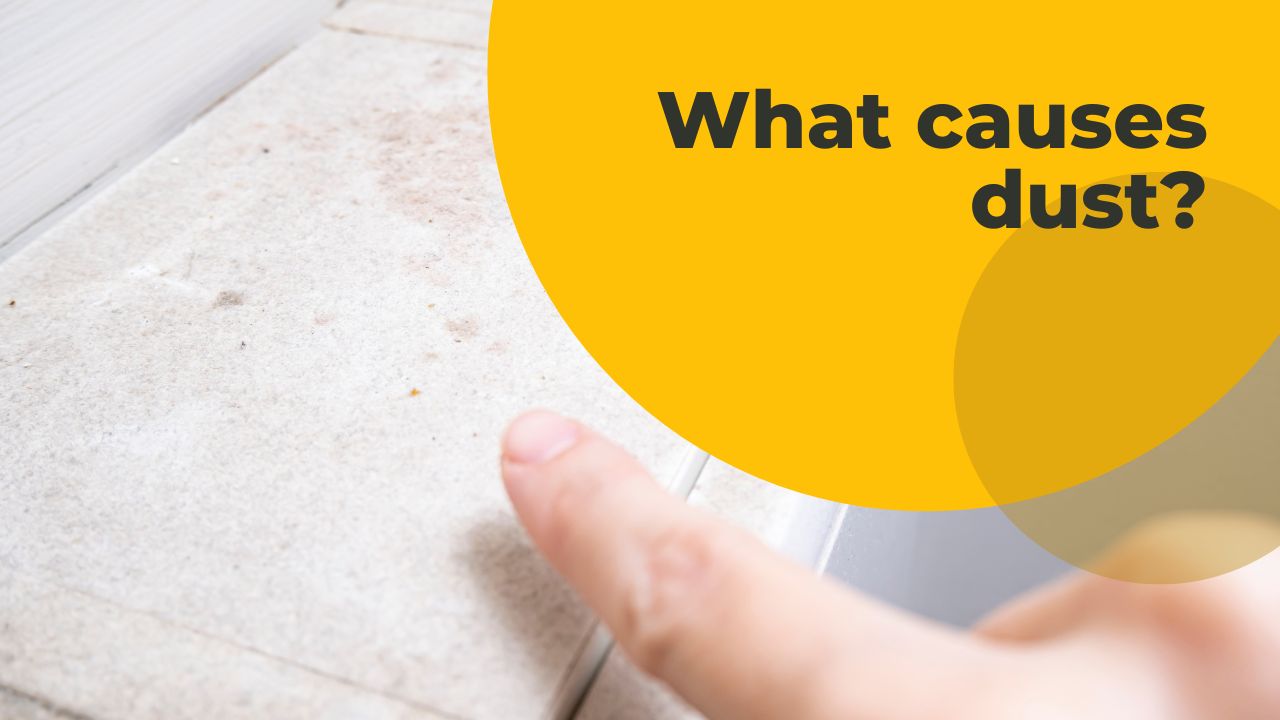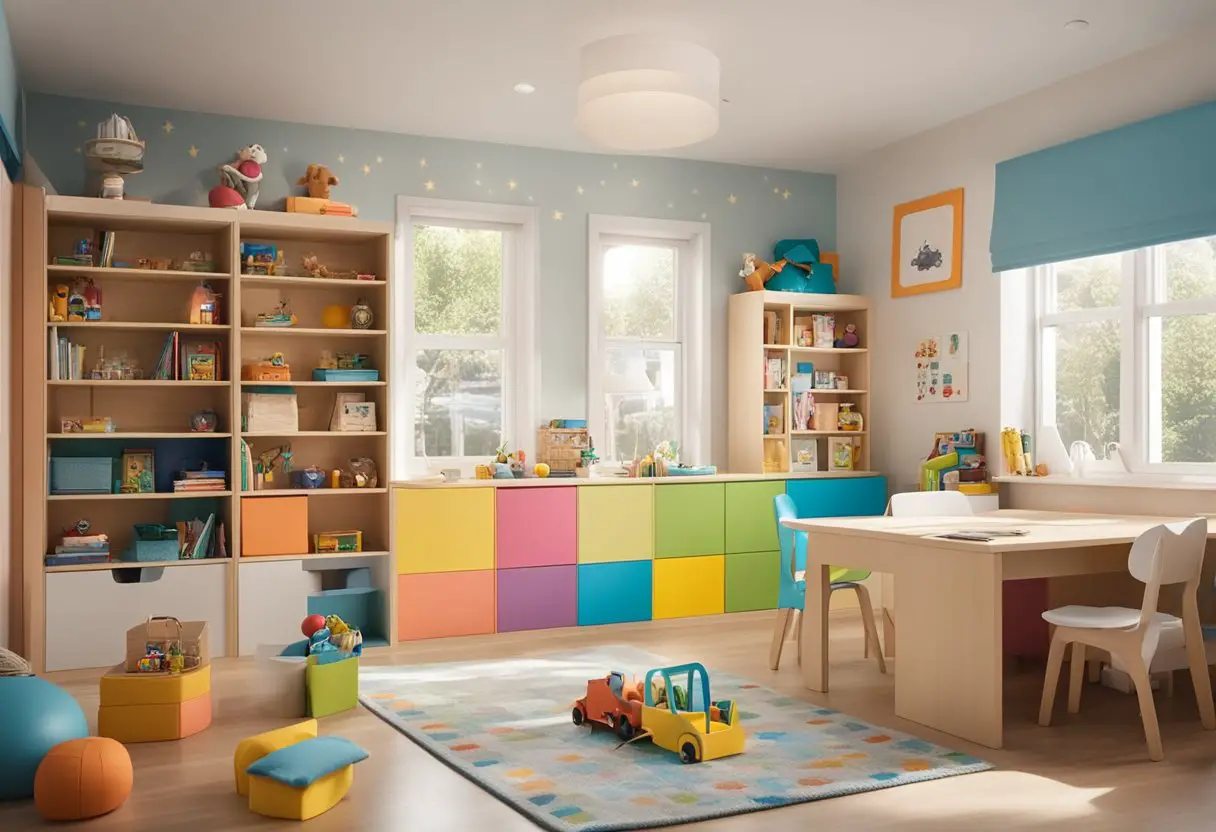Reducing dust in your home can be a daunting task, but it is important for maintaining a healthy living environment. Dust causes allergies, respiratory problems, and other health issues if left untreated. Understanding what dust is and where it comes from is the first step in reducing it.
Dust is made up of tiny particles of dirt, pollen, dead skin, and other materials that can accumulate in your home. It can come from outside, pets, or even from everyday activities such as cooking and cleaning.
Regular cleaning is essential to keeping dust levels low, but there are other measures you can take to reduce it even further. Proper ventilation, choosing the right flooring, and using dust covers are just a few examples of effective methods for reducing dust.
Table of Contents
Key Takeaways
- Regular cleaning is essential for reducing dust levels in your home.
- Proper ventilation, flooring choices, and dust covers can also help reduce dust.
- Maintaining a clutter-free environment and effective laundry practices are additional steps you can take to reduce dust.
Understanding Dust
Dust is a common household nuisance that can cause allergies, respiratory problems, and other health issues. It is composed of a variety of particles including dead skin cells, pet dander, pollen, fibers, and dust mites. These particles can accumulate in carpets, furniture, and other surfaces, making it difficult to remove.
One way to understand dust is to think of it as a combination of indoor and outdoor pollutants. Outdoor pollutants such as pollen, dirt, and exhaust fumes can enter the home through open windows and doors, while indoor pollutants such as pet dander and dust mites can be generated by everyday activities like cooking, cleaning, and shedding skin cells.
Dust can also be a problem in areas with high humidity levels. Moisture can cause dust mites to thrive, leading to an increase in dust levels. In addition, dust can settle in air ducts and HVAC systems, leading to poor indoor air quality.
Reducing dust in the home can be challenging, but it is possible by following a few simple steps. Regular cleaning and vacuuming can help remove dust particles from surfaces and carpets. Using a high-efficiency particulate air (HEPA) filter in vacuum cleaners and air purifiers can capture even the smallest dust particles.
In addition, using doormats and removing shoes before entering the home reduces the amount of outdoor pollutants that enter the home. Washing bedding, curtains, and other fabrics regularly also helps reduce dust levels.

Importance of Regular Cleaning
Regular cleaning is crucial for reducing dust in the home. Dust is made up of a variety of particles, including pollen, skin flakes, dirt, and sand, and can cause a range of health problems.
Daily Dusting
Daily dusting is an effective way to reduce the amount of dust in your home. Dusting surfaces, such as shelves, tables, and countertops, with a damp cloth or duster can help trap and lock dust, preventing it from becoming airborne. Using a vacuum cleaner with a HEPA filter also helps remove dust from carpets and upholstery, reducing the amount of dust that circulates in the air.
Weekly Deep Cleaning
In addition to daily dusting, it is important to perform a weekly deep cleaning of your home. This includes cleaning areas that are often overlooked, such as baseboards, ceiling fans, and light fixtures. Vacuuming and mopping floors can also help remove dust and dirt that has accumulated over the week.
By regularly cleaning your home, you can reduce the amount of dust that accumulates, creating a healthier living environment. It is important to use the right tools and techniques when cleaning to ensure that you are effectively removing dust from your home. Using a damp cloth or duster and a vacuum cleaner with a HEPA filter can help trap and remove dust, while a weekly deep cleaning can help remove dust and dirt that has accumulated over time.
Proper Ventilation
Proper ventilation is one of the most important things to consider when trying to reduce dust in a home or office. Ventilation helps to circulate air and remove airborne particles that contribute to dust buildup.
Air Purifiers
Air purifiers are an effective way to improve indoor air quality and reduce dust. They work by filtering out airborne particles, including dust, pollen, and pet dander. When selecting an air purifier, it’s important to choose one with a HEPA filter, which is designed to capture particles as small as 0.3 microns.
Air purifiers can be particularly useful for people with allergies or asthma, as they can help to reduce symptoms.
It’s important to note that air purifiers are not a substitute for proper ventilation.
Regular Air Filter Changes
Regularly changing air filters is another important step in reducing dust in a home or office. Air filters are designed to capture airborne particles, including dust, pollen, and pet dander. Over time, these particles can clog the filter, reducing their effectiveness.
To ensure that air filters are working properly, they should be changed every three months or more frequently if there are pets or smokers in the home. It’s also important to choose a high-quality air filter that is designed to capture small particles. Always check manufacturers guidelines.
In addition to changing air filters, it’s also important to keep air vents and ducts clean. Dust and debris can accumulate in these areas, reducing the effectiveness of ventilation systems. Regular cleaning can help to ensure that air is circulating properly and reduce dust buildup.

Flooring Choices
When it comes to reducing dust in your home, choosing the right flooring can make a significant difference. In general, hard surface flooring is the best option for those with allergies and asthma because it’s easy to sweep and mop, and it doesn’t attract dust mites or mold. Here are some things to consider when choosing the right flooring for your home.
Hardwood over Carpet
Hardwood floors are a popular choice for many homeowners because they are durable, long-lasting, and easy to maintain. Unlike carpet, hardwood floors don’t trap dust, pollen, or pet dander, making them an ideal choice for those with allergies or asthma.
However, it’s important to note that hardwood floors can still accumulate dust over time, especially if they’re not cleaned regularly. To keep hardwood floors dust-free, it’s essential to sweep or vacuum them at least once a week. Additionally, using a microfiber mop or cloth to clean hardwood floors can help trap dust and prevent it from becoming airborne.
Using Rugs
While hardwood floors are an excellent choice for reducing dust, they can be cold and hard underfoot. Using area rugs or runners in high-traffic areas can help add warmth and comfort to your home while also reducing dust.
When choosing rugs, it’s important to select ones that are easy to clean and maintain. Natural fiber rugs like wool or cotton are great choices because they are durable and easy to vacuum. Avoid using synthetic rugs, as they can attract dust and other allergens.
Using Dust Covers
Dust covers are a simple and effective way to reduce the amount of dust that accumulates on furniture, electronics, and other household items. These covers are made from a variety of materials, including plastic, fabric, and vinyl, and come in a range of sizes to fit everything from small appliances to large pieces of furniture.
One of the main benefits of using dust covers is that they provide a physical barrier between your items and the dust in the air. This can be especially helpful for people who suffer from allergies or asthma, as dust can exacerbate these conditions. By covering your items, you can significantly reduce the amount of dust that accumulates on them.
Another benefit of using dust covers is that they can help to protect your items from damage. Dust can scratch and damage delicate surfaces over time, and can also cause electronics to overheat if it accumulates inside them. By covering your items, you can help to prevent this damage and extend the life of your belongings.
When using dust covers, it’s important to choose the right size and material for your needs. For example, if you’re covering a large piece of furniture, you’ll need a cover that’s big enough to fit over it completely. If you’re covering electronics, you’ll want to choose a cover that’s made from a breathable material, such as fabric or mesh, to prevent overheating.
Effective Laundry Practices
One of the most effective ways to reduce dust in the home is through proper laundry practices. Dust mites thrive in warm and humid environments, and bedding is a prime location for them to accumulate. To combat this, it is recommended to wash all bedding, including sheets, blankets, and bed covers, at least once a week in hot water between 130 to 140 F. Hot water is effective in killing dust mites, and cold water may not be as effective.
It is also important to dry bedding thoroughly in a dryer or outside in the sun. Drying bedding in a dryer on high heat for at least 20 minutes can kill any remaining dust mites. If drying outside, make sure bedding is completely dry before bringing it back inside.
In addition to washing bedding, it is recommended to wash other items that collect dust, such as curtains, throw pillows, and stuffed animals, at least once a month in hot water. It is also important to clean the washing machine regularly to prevent the buildup of dust and other allergens.
When washing, it is best to use unscented laundry detergent and avoid using fabric softeners or dryer sheets, as they can leave a residue that attracts dust. Instead, use wool dryer balls to help fluff and soften laundry without adding any chemicals.
Maintaining a Clutter-Free Environment
Reducing clutter is an important step in minimizing dust in the home. Cluttered spaces can collect dust and make cleaning more difficult. Here are a few tips for maintaining a clutter-free environment:
- Declutter regularly: Go through your belongings regularly and get rid of items that are no longer needed or used. This will not only reduce clutter but also make cleaning easier.
- Designate a place for everything: Assign a specific place for each item in your home. This will make it easier to find things and prevent clutter from accumulating.
- Use storage solutions: Use storage solutions such as shelves, cabinets, and baskets to keep items organized and out of sight.
- Avoid accumulating unnecessary items: Be mindful of what you bring into your home. Avoid buying unnecessary items that will only add to the clutter.
- Create a cleaning schedule: Create a cleaning schedule and stick to it. This will help you stay on top of cleaning tasks and prevent dust from accumulating.
Conclusion
Reducing dust in the home or workplace is essential to maintain a clean and healthy environment. By following the tips and best practices outlined in this article, individuals can significantly reduce the amount of dust in their surroundings.
One of the most effective ways to reduce dust is by cleaning regularly. Using a vacuum cleaner with a HEPA filter is recommended to ensure that dust particles are trapped and not released back into the air. Additionally, dusting surfaces with a damp cloth can help prevent dust from becoming airborne.
Maintaining optimal humidity levels is also crucial in reducing dust buildup. Keeping the humidity in the home or workplace between 40 and 50 percent can help lower static electricity, which can cause dust to stick to surfaces. Using a humidifier or adding leafy indoor plants can help increase humidity levels.
Investing in an air purifier with a HEPA filter is another effective way to reduce dust. These machines are designed to collect and trap dust particles, making them ideal for high-dust households or families with dust allergies. It is recommended to place the air purifier near the door or window for optimal dust-dodging action.
Finally, following best practices for dust management in the workplace is essential to ensure the health and safety of employees. Sweeping with a broom or blowing dust away with compressed air is not an effective method for controlling dust. Instead, using dust control systems such as ventilation and filtration systems can help eliminate health and safety risks associated with dust exposure.
Overall, reducing dust requires a combination of regular cleaning, maintaining optimal humidity levels, investing in air purifiers, and following best practices for dust management.
Frequently Asked Questions
How can I reduce dust in my home?
To reduce dust in your home, it is important to keep your home clean and well-ventilated. Regularly vacuuming and dusting surfaces can help remove dust, as can washing bedding and curtains regularly. Additionally, using air filters and keeping humidity levels low can also help reduce dust in your home.
What are some natural ways to get rid of house dust?
Some natural ways to get rid of house dust include using essential oils like eucalyptus or tea tree oil, which have natural antibacterial properties that can help reduce dust and allergens. Additionally, using natural cleaning products like vinegar and baking soda can help remove dust and dirt without introducing harmful chemicals into your home.
Do air purifiers effectively reduce dust?
Air purifiers can be effective at reducing dust and other allergens in your home, but it is important to choose a purifier with a HEPA filter, which can trap small particles like dust and pollen. Additionally, it is important to regularly clean and maintain your air purifier to ensure it is working effectively.
What causes excessive dust in a home?
Excessive dust in a home can be caused by a variety of factors, including poor ventilation, dirty air filters, and high humidity levels. Additionally, pets, carpets, and upholstery can all contribute to dust buildup in a home.
How can I prevent dust from entering my home through windows?
To prevent dust from entering your home through windows, it is important to keep windows closed during times of high wind or dust. Additionally, using window screens and weatherstripping can help reduce the amount of dust that enters your home through windows.
Are there any simple tricks to eliminate dust without dusting?
Some simple tricks to eliminate dust without dusting include using microfiber cloths to wipe down surfaces, using a vacuum with a HEPA filter to clean floors and upholstery, and using an air purifier to remove dust and allergens from the air. Additionally, keeping humidity levels low and regularly washing bedding and curtains can also help reduce dust buildup in your home.




